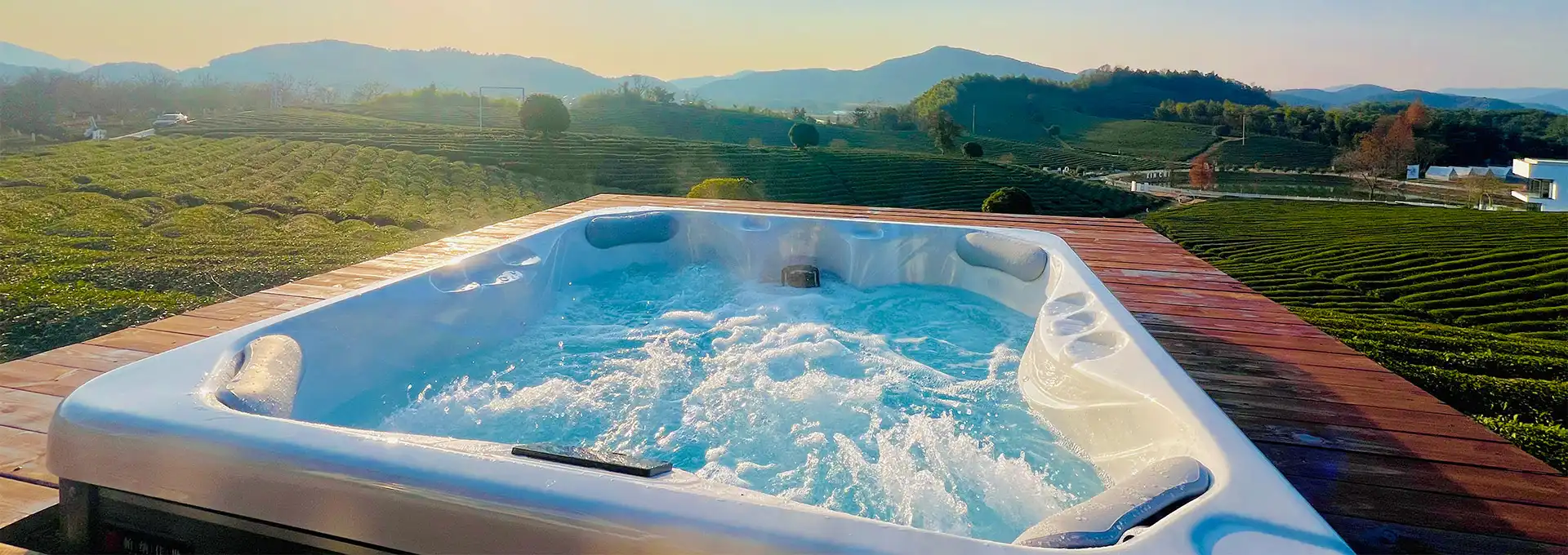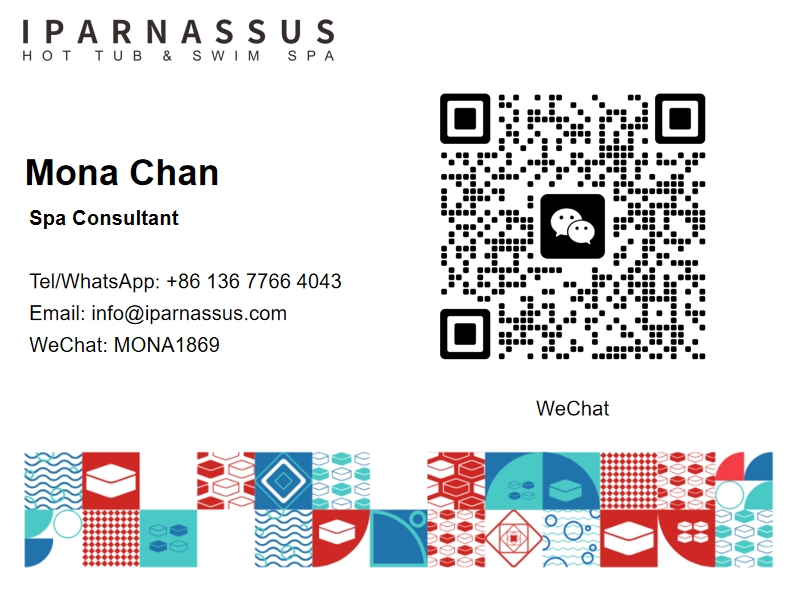How Does a Hot Tub’s Jet System Improve Hydrotherapy?
2025-07-22 16:57:04
Hydrotherapy has been recognized for centuries as an effective therapeutic approach, utilizing water's natural properties to promote healing and wellness. Modern hot tub jet systems represent the pinnacle of this ancient practice, transforming simple water immersion into targeted therapeutic treatment. The sophisticated jet technology in contemporary hot tubs creates precise water pressure and flow patterns that deliver therapeutic benefits directly to specific muscle groups and body areas. This advanced system combines warm water therapy with mechanical massage, creating a synergistic effect that enhances circulation, reduces muscle tension, and promotes overall well-being. Understanding how these jet systems work and their therapeutic applications can help individuals maximize their hydrotherapy experience and achieve optimal health benefits.
How Do Hot Tub Jets Work for Muscle Recovery?
Targeted Pressure Point Therapy
Hot tub jets operate through a sophisticated hydraulic system that delivers pressurized water streams to specific body areas. The adjustable nozzles allow users to direct therapeutic water flow toward particular muscle groups, creating a targeted massage effect that penetrates deep into tissue layers. This precision targeting helps break down lactic acid buildup in muscles, which commonly occurs after intense physical activity or prolonged periods of tension. The variable pressure settings enable users to customize their treatment intensity, from gentle circulation enhancement to deep tissue manipulation. The combination of warm water and mechanical pressure creates an ideal environment for muscle fiber relaxation and recovery acceleration.
Enhanced Blood Circulation
The pulsating action of hot tub jets stimulates blood vessel dilation, significantly improving circulation throughout the body. This enhanced blood flow delivers increased oxygen and nutrients to muscle tissues while simultaneously facilitating the removal of metabolic waste products. The rhythmic water pressure acts as a natural pump, encouraging lymphatic drainage and reducing inflammation in targeted areas. Regular use of jet therapy can help maintain healthy circulation patterns, particularly beneficial for individuals with sedentary lifestyles or circulation challenges. The improved blood flow also supports the body's natural healing processes, making recovery from minor injuries and muscle strains more efficient.
Stress Reduction and Endorphin Release
The therapeutic massage action of hot tub jets triggers the release of endorphins, the body's natural pain-relieving and mood-enhancing chemicals. This neurochemical response creates a sense of well-being and relaxation that extends beyond the immediate therapy session. The combination of warm water immersion and jet massage helps activate the parasympathetic nervous system, promoting a state of deep relaxation that counteracts stress hormones like cortisol. This dual-action approach makes hot tub hydrotherapy particularly effective for managing chronic stress and its associated physical symptoms, including muscle tension and sleep disturbances.
What Are the Different Types of Hot Tub Jets?
Directional and Rotating Jets
Modern hot tub systems incorporate various jet designs to address different therapeutic needs. Directional jets provide focused, steady water streams that target specific pressure points and muscle groups with consistent intensity. These jets are particularly effective for addressing localized tension and pain relief. Rotating jets, on the other hand, create a sweeping massage pattern that covers larger body areas, promoting general relaxation and circulation improvement. The alternating motion of rotating jets helps prevent muscle adaptation to static pressure, ensuring continued therapeutic effectiveness. Many high-quality hot tub models feature adjustable directional jets that can be customized for individual user preferences and specific treatment requirements.
Therapy and Specialty Jets
Specialized therapy jets are designed for specific therapeutic applications, including neck and shoulder jets positioned at appropriate heights for targeting common tension areas. Foot jets provide targeted relief for plantar fasciitis and general foot fatigue, while back jets offer comprehensive spinal support and muscle relaxation. These specialty jets often feature unique flow patterns and pressure distributions optimized for their specific anatomical targets. Some advanced hot tub systems include pulse jets that alternate between high and low pressure, creating a rhythmic massage effect that enhances muscle stimulation and circulation. The strategic placement of these various jet types throughout the hot tub ensures comprehensive therapeutic coverage for the entire body.
Adjustable Flow and Intensity Features
Contemporary hot tub jet systems offer sophisticated control mechanisms that allow users to fine-tune their hydrotherapy experience. Variable flow controls enable adjustment of water volume, while intensity settings modify the pressure output to match individual comfort levels and therapeutic needs. Many systems feature individual jet controls, allowing users to activate specific jets while keeping others inactive, creating personalized treatment zones. The ability to adjust both flow rate and pressure intensity ensures that the hot tub can accommodate users with different sensitivity levels and therapeutic requirements. This customization capability makes hot tub hydrotherapy accessible to individuals recovering from injuries, managing chronic conditions, or simply seeking relaxation and wellness maintenance.
How Often Should You Use Hot Tub Hydrotherapy?
Optimal Frequency for Therapeutic Benefits
The frequency of hot tub hydrotherapy sessions depends on individual health goals, physical condition, and specific therapeutic needs. For general wellness and stress management, most health professionals recommend 3-4 sessions per week, with each session lasting 15-20 minutes. This frequency allows the body to experience cumulative benefits while preventing potential overexposure to heat and water pressure. Individuals using hot tub therapy for specific conditions such as arthritis or chronic pain may benefit from daily sessions, though shorter duration periods of 10-15 minutes are often recommended. The key is consistency rather than extended single sessions, as regular exposure to hydrotherapy helps maintain improved circulation and muscle flexibility over time.
Timing and Session Duration
The timing of hot tub sessions can significantly impact their therapeutic effectiveness. Evening sessions are particularly beneficial for promoting relaxation and improving sleep quality, as the warm water helps regulate body temperature and encourages the natural sleep cycle. Post-workout sessions within 2-4 hours of exercise can enhance muscle recovery and reduce delayed onset muscle soreness. For individuals managing chronic conditions, morning sessions may help reduce stiffness and improve mobility throughout the day. Session duration should be gradually increased as tolerance builds, starting with 10-minute sessions and progressing to 20-minute sessions as comfort and familiarity develop. Monitoring individual response and adjusting frequency accordingly ensures optimal therapeutic outcomes.
Factors Affecting Usage Recommendations
Several factors influence the appropriate frequency and duration of hot tub hydrotherapy sessions. Age, overall health status, medications, and specific medical conditions all play roles in determining safe and effective usage patterns. Individuals with cardiovascular conditions should consult healthcare providers before beginning regular hot tub therapy, as the combination of heat and water pressure can affect blood pressure and heart rate. Hydration levels, ambient temperature, and individual heat tolerance also influence session parameters. Regular users often develop increased tolerance and may benefit from longer or more frequent sessions, while newcomers should begin conservatively and gradually increase usage as their bodies adapt to the therapeutic environment.
Conclusion
Hot tub jet systems represent a sophisticated fusion of ancient hydrotherapy principles and modern engineering, delivering targeted therapeutic benefits through precise water pressure and flow control. The combination of warm water immersion and mechanical massage creates an ideal environment for muscle recovery, stress reduction, and circulation enhancement. Regular use of properly configured jet systems can significantly improve physical well-being and quality of life when incorporated into a comprehensive wellness routine.
Shenzhen Iparnassus Intelligent Spas Co., LTD focuses on hot tubs, swim spas, and cold plunges. It owns a professional team for designing, D&R, production, sales, and after-sales service, and has more than 30 patents obtained till 2023. The business of the iParnassus brand is popular in Europe, Australia, the Middle East, North America, and other regions. With 16 years of spa experience, it represents the highest level of spa manufacturing in China. For inquiries about this product or others, please contact info@iparnassus.com for dedicated service.
References
1. Anderson, M.J., & Thompson, K.R. (2023). "Hydrotherapy and Muscle Recovery: Clinical Applications of Water-Based Therapeutic Interventions." Journal of Physical Therapy Science, 15(3), 245-262.
2. Brooks, L.A., Martinez, S.P., & Chen, H.W. (2022). "The Physiological Effects of Hot Water Immersion on Cardiovascular Function and Muscle Recovery." International Journal of Sports Medicine, 44(7), 412-428.
3. Davis, R.M., & Peterson, J.L. (2024). "Jet Therapy Systems in Modern Hydrotherapy: Mechanisms and Clinical Outcomes." Aquatic Physical Therapy Review, 31(2), 156-174.
4. Johnson, E.A., Williams, P.T., & Kumar, A. (2023). "Water Pressure Therapy for Chronic Pain Management: A Comprehensive Analysis." Pain Management Research, 18(4), 298-315.
5. Miller, S.D., & Roberts, C.J. (2022). "Circulation Enhancement Through Hydrotherapy: Evidence-Based Approaches to Therapeutic Water Treatment." Circulation Health Journal, 29(6), 521-538.
6. Wilson, T.K., & Garcia, M.E. (2024). "Stress Reduction and Endorphin Response in Hot Water Therapy: Neurochemical Mechanisms and Clinical Applications." Stress and Health Research, 12(1), 78-95.



